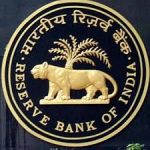ALWAYS – INVEST IN WHAT YOU KNOW & WHAT YOU CAN UNDERSTAND. DEVELOP CURIOSITY AS A TRAIT
General Money || Personal Finance || Stock Markets || Real Estate ||
Must know facts:
- As per the Reserve Bank of India (RBI), India’s banking sector is sufficiently capitalised and well-regulated. The financial and economic conditions in the country are far superior to any other country in the world. Credit, market and liquidity risk studies suggest that Indian banks are generally resilient and have withstood the global downturn well.
- The Indian banking system consists of 12 public sector banks, 22 private sector banks, 46 foreign banks, 56 regional rural banks, 1485 urban cooperative banks and 96,000 rural cooperative banks in addition to cooperative credit institutions.
- Strong growth in savings amid rising disposable income levels are the major factors influencing deposit growth.
Influencing Factors for price change:
- Movement in banking stocks is well judged when its seen in line with movement of Indices like NIFTY BANK, NIFTY PSU BANK, NIFTY PVT BANK.
- Banking regulation amendments issued by Ministry of Finance from time to time, is certainly an important pointer that could affect stock movements. For Ex: PSU banks recap policy, privatisation of banks, Potential mergers & acquisitions.
- Primary data which states the health of banks such as – the value of banks’ gross nonperforming assets (GNPA) and restructured assets data are extremely important. RBI’s credit policy meets that dictates changes to CRR, Repo, Reverse repo rates is a key.
- The push for digitisation, new policies favour financial inclusion to promote competition by allowing new domestic players to set up payments banks – are important banking parameters which are taken into account for a relative judgement.
Understanding the Industry:
The Indian banking sector is broadly classified into scheduled and non-scheduled banks. The scheduled banks are those included under the 2nd Schedule of the Reserve Bank of India Act, 1934. The scheduled banks are further classified into: nationalised banks; State Bank of India and its associates; Regional Rural Banks (RRBs); foreign banks; and other Indian private sector banks. The term commercial banks refers to both scheduled and non-scheduled commercial banks regulated under the Banking Regulation Act, 1949.
The digital payments system in India has evolved the most among 25 countries with India’s Immediate Payment Service (IMPS) being the only system at level five in the Faster Payments Innovation Index (FPII).* India’s Unified Payments Interface (UPI) has also revolutionised real-time payments and strived to increase its global reach in recent years.
Public-sector banks are more exposed to industry sectors with a higher share of nonperforming loans than their private-sector counterparts are. These state-owned institutions have deep networks and control 70 percent of banking’s asset base. From 2009 to 2016, the government made capital infusions of $15 billion into them. But over the years, value has steadily shifted toward private-sector institutions, whose share of the sector’s assets has grown to 25 percent, from 21 percent, in the past decade.1 (Foreign banks account for the remaining 5 percent.) The division is more apparent in the value banks created from 2006 to 2016: private banks have grown faster and generated far more value for their shareholders, with their share of market cap increasing from about 40 percent to nearly 70 percent in the same period. (report by Mckinsey)
Loan growth in fiscal year 2017 has remained anemic—the banks’ credit books shrank by 4 percent in the past quarter. With the balance sheets of major Indian companies continuing to be under stress, the volume of corporate loans fell by 3 percent from April to December 2016. Roughly 40 percent of the outstanding debt is to companies whose interest-coverage ratio is less than one,2 making debt repayment difficult. Overall, the recovery of wholesale-banking loans seems difficult in the medium term. (report by Mckinsey)
The Indian government’s decision to demonetize the currency—about 85 percent of it ceased to be legal tender on November 8, 2016—led to a surge in the current and savings-account (CASA) deposits of the country’s banks. Slow loan growth, combined with the higher CASA, has pushed down the banks’ credit-deposit ratios, a standard measure of loans to deposits. If credit offtake fails to pick up, these factors could affect the banks’ net interest income.
The digital payments system in India has evolved the most among 25 countries with India’s Immediate Payment Service (IMPS) being the only system at level 5 in the Faster Payments Innovation Index (FPII).* In August 2017, Global rating agency Moody’s announced that its outlook for the Indian banking system was stable. In November 2017, Global rating agency Moody’s upgraded four Indian banks from Baa3 to Baa2.
Estimated Market Size:
Public-sector banks control more than 70 per cent of the banking system assets, thereby leaving a comparatively smaller share for its private peers. Banks are also encouraging their customers to manage their finances using mobile phones.
As the Reserve Bank of India (RBI) allows more features such as unlimited fund transfers between wallets and bank accounts, mobile wallets are expected to become strong players in the financial ecosystem.
The unorganised retail sector in India has huge untapped potential for adopting digital mode of payments, as 63 per cent of the retailers are interested in using digital payments like mobile and card payments, as per a report by Centre for Digital Financial Inclusion (CDFI).
Bank accounts opened under GoI Pradhan Mantri Jan Dhan Yojana are over 450 Mn with deposits of over ~$22 Bn in beneficiary accounts. Investments stood as the 2nd largest component in the assets side of the total banks’ balance sheets after loans and advances, driven primarily by Government securities. As of 2020, the capital adequacy amongst Indian banks remained above regulatory requirements with RBI also further relaxing the leverage ratio for banks to boost lending.
Road Ahead:
Large consumption market – India will become the 3rd largest consumer economy by 2030, driven by a young population comprising 65% population below the age of 35 years.
Digital adoption continues to be propelled by rural India – clocking an 8% YoY growth to 333 Mn internet users (37% of rural population). Rural consumption accounts for 45% of all data consumption in India. Now there are 7 Rural Internet Subscriber, for every 10 Urban Internet Subscribers. India already has the 2nd highest number of smartphone users globally, and is the 2nd largest Internet user market. Digitisation medium’s such as UPI, are already acting as growth drivers across rural areas in India.
Public sector banks are lining up to raise funds via qualified institutional placements (QIP), backed by better investor sentiment after the Government of India’s bank recapitalisation plan and an upgrade in India’s sovereign rating by Moody’s Investor Service.
The further easing of norms, such as permission to set up wholly owned subsidiaries, makes it easier for foreign banks to enter India’s banking sector. Although processes are evolving, regulatory interventions point to the emergence of a digital, inclusive, and interoperable financial-services market in India.
The Government of India is planning to introduce a two percentage point discount in the Goods and Services Tax (GST) on business-to-consumer (B2C) transactions made via digital payments. Many banks, including HDFC, ICICI and AXIS have already introduced option to contact-less credit and debit cards in the market. The cards, which use near field communication (NFC) mechanism, will allow customers to transact without having to insert or swipe.
– Article by Suman Adithya Rao (SEBI Certified Research Analyst, Management Graduate in Entrepreneurship & Small Business Management)
Looking for an investment advice – Click here!
Top Stocks in the industry:
Private Sector Banks – HDFC Bank, ICICI Bank, Kotak Mahindra, Axis Bank, IndusInd Bank & many more.
Public Sector Banks – SBI, Bank of Baroda, PNB, Canara Bank & many more.
(Please note above stocks are not recommendations, they are purely for information purpose only)
Information Source / References: IBEF, Mckinsey report on Indian Banking, The Economic Survey 2016–17/17-18, Agricultural and Processed Food Products Export Development Authority (APEDA), Department of Commerce and Industry, Union Budget 2017–18, Press Information Bureau, Ministry of Statistics and Programme Implementation, Press Releases, Media Reports,RBI, IBEF, www.pmjdy.gov.in.
General Money || Personal Finance || Stock Markets || Real Estate ||
More Research Articles:
Agriculture Related Industry Analysis, Automobile Industry Analysis, IT Industry Analysis, Banking Industry Analysis, Courier-Logistics Industry Analysis, Education Industry Analysis, Manufacturing Industry Analysis, RealEstate Industry Analysis, Healthcare & Hospitals Industry Analysis, Telecommunications Industry Analysis .. Choose from Menu for Research on 30+ industry sectors
Knowledge Seekers Paradise: PDF DOWNLOAD’s of HANDBOOKs released by Government of India:
Government Schemes Announced – Budget 2018-19



